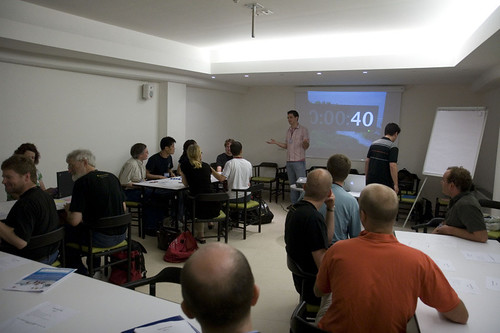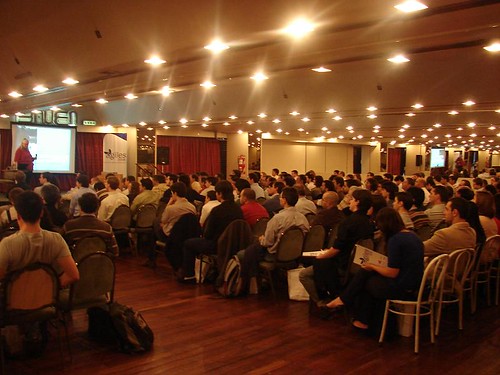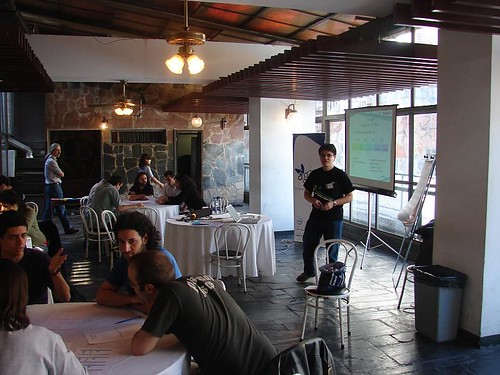June 7th, 2009[XP 2009] The Lego Lean Game
Last week marked the 10th edition of the XP 200x conference, held in Sardinia, Italy. Me and Francisco were there to present an extended version of our Lego Lean Game. Being selected as the first session on the first day of the program, we were expecting a small audience, but it turned out to be quite well attended by about 20-25 people.
We started the session a bit delayed, due to the lack of room organisation: I was a bit shocked when we arrived and the room was arranged as a normal “lecture room”, rather than the usual group tables (that we requested a week before). Projector and flipchart were not available, so it took us about 15 minutes to have everything ready to begin.
The slow start, however, did not got in the way of the overall workshop. We have designed the activities in a flexible way that allow us to adapt their length just-in-time so we still managed to cover everything we wanted without having to rush.
The first half of the workshop was mostly the same version we presented last year in Buenos Aires, with slight modifications based on feedback we got from participants. The second half, however, was mostly new and we included an activity to allow each team to come up with their own processes (rather than following ours). This turned out to be a great success! Each group came up with different ideas and, by watching the other teams perform, we had an interesting discussion about the different approaches and results. We now think that the original version is too condensed :-)
The feedback we received after the session was great and a lot of people asked us for the material to run the session themselves. Me and Francisco have a “game package” that we can share for those interested in running the game. Get in touch with us if you’re interested! You can find more photos of our presentation here, here, and here (thanks to Hubert for sharing his pictures!). The slides are also available:
We are very interested in your feedback. So, if you were at the conference or want to use the material to run the workshop, please let us know! Share your experiences and help us make it better!








 Twitter
Twitter LinkedIn
LinkedIn Facebook
Facebook Flickr
Flickr